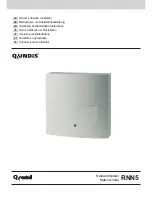
14
Step Command
Remarks
outgoing-interface
interface-type
interface-number
}
out-label
out-label
node has an active route to the
specified next hop address.
4.
Configure the egress
node of the static LSP.
static-lsp egress
lsp-name
in-label
in-label
You do not need to configure this
command if the outgoing label
configured on the penultimate hop
of the static LSP is 0 or 3.
Displaying static LSPs
Execute
display
commands in any view.
Task Command
Display static LSP information.
display mpls static-lsp
[
lsp-name
lsp-name
]
Static LSP configuration example
Network requirements
Router A, Router B, and Router C all support MPLS.
Establish static LSPs between Router A and Router C, so that subnets 11.1.1.0/24 and 21.1.1.0/24
can access each other over MPLS.
Figure 8 Network diagram
Configuration restrictions and guidelines
•
For an LSP, the outgoing label specified on an LSR must be identical with the incoming label
specified on the downstream LSR.
•
LSPs are unidirectional. You must configure an LSP for each direction of the data forwarding
path.
•
A route to the destination address of the LSP must be available on the ingress and egress
nodes, but it is not needed on transit nodes. Therefore, you do not need to configure a routing
protocol to ensure IP connectivity among all routers.
Configuration procedure
1.
Configure IP addresses for all interfaces, including the loopback interfaces, as shown in
. (Details not shown.)
2.
Configure a static route to the destination address of each LSP:
# On Router A, configure a static route to network 21.1.1.0/24.
Содержание HPE FlexNetwork MSR Router Series
Страница 10: ...viii Index 540 ...
















































